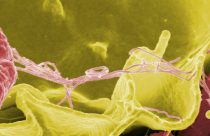InkScape: Create Eye-Catching Scientific Illustrations for Your Manuscript

Scientific researchers know how important it is to communicate their findings via illustrations and diagrams. Poorly drawn figures are difficult to understand. As a result, they degrade the overall quality of a paper being submitted for publication or presentation.
As an author of scientific articles, you need to educate yourself on the basic guidelines for image production. One thing to remember is the difference between vector and raster images. Raster images (e.g., images in the JPEG and PNG formats) are the most commonly used images.These file formats are fine for everyday use. Photographic images with grey areas and non-distinct edges are generally available in this format. However, when it comes to presenting sharply drawn line art and graphs, vector images are the best choice. In fact, they are the best for artwork submitted to scientific journals. Vector type graphics utilize file formats such as PDF, SVG, and EPS.
Choosing a Vector Graphics Editor
A vector graphics editor is a software program that allows you to create and edit line art, such as graphs, charts, and illustrations. A variety of programs can be used to edit vector graphics. How would you choose an optimal program for your work? Just follow these tips below:
- Does the program work on your operating system (i.e., Windows, Mac, etc.)?
- Is the user interface easy to use? Are the tools easily available?
- Is the program well suited for vector file types (see above), both for import and export?
- How much does the software cost?
What Makes InkScape a Good Choice for Vector Graphic Editing?
When considering vector graphic editing, InkScape is a good choice for the following reasons:
- InkScape is open source, which means there is no cost to use it! This sets it apart from Adobe Illustrator and other commercial programs that until now have dominated the market.
- The InkScape program works with SVG-type files, which can be produced via open source programs.
- A wide range of editing tools and features allow the author to create scientific diagrams of the same versatility and quality as those produced with Adobe or InDesign.
- InkScape runs on all operating systems: Windows, Mac, and Linux.
InkScape is a good choice for authors preparing diagrams and other line art for their manuscript. At the same time, you should be aware that this open source program has a few limitations, compared to high-priced programs like Adobe. For example, if you need to create images in color, be sure to double check that CMYK colors are available in InkScape. This is something that most printers will require if they are to accurately reproduce your color artwork. A 2016 article reported that InkScape did not include CMYK color profiles. However, the CMYK option is listed in the current features list for InkScape. It is always a good idea to communicate directly with software providers to clear up these kinds of questions.
Look Out for Specific Guidelines on Images
In general, you should always be aware of the specific requirements of the target journal for image production and editing. Be sure to consult the guidelines for authors for each journal before you invest time and effort in editing your images.
Even more importantly, every author should review and understand the criteria used to judge images for source and accuracy. Preparation and editing of images should not lead to image manipulation. Inappropriate or fraudulent manipulation has, unfortunately, become a common occurrence in scientific publication.
What are the software programs you use for editing the vector images in your manuscript? Please let us know your thoughts in the comments section below.









